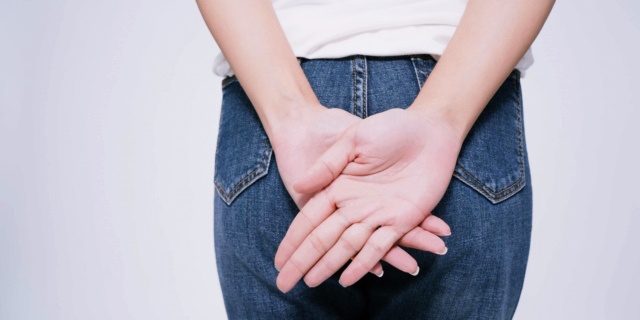
An anal fissure is a small tear or crack in the lining of the anus, usually caused by trauma to the anal canal. One of the leading causes is constipation, and managing it is often the first step toward preventing the condition from becoming chronic. Straining during bowel movements can cause a sharp, glass-cut-like pain and sometimes bleeding. Anal fissures are relatively common and can affect individuals of all ages. In this article, we aim to answer essential questions such as: What is an anal fissure?, What are the symptoms of an anal fissure?, and How is an anal fissure treated?
Table of Contents
WARNING: This content is for informational purposes only and is not intended to provide medical advice. {alertError}
What Is an Anal Fissure?

An anal fissure is a tear in the sensitive skin of the anal canal. Even a minor tear in this area can lead to intense pain due to the density of nerve endings. If left untreated, it can evolve into a chronic condition, leading to prolonged discomfort and complications.
SEE ALSO: Hydration Matters: How to Make Drinking Water a Daily Habit
Common Symptoms of Anal Fissure
Although symptoms may vary from person to person, there are several hallmark signs that often point to this condition:
- Sharp pain during and after bowel movements (described as if being cut by glass)
- Burning or itching sensations in the anal area
- Bleeding with each bowel movement
- A small, often painful lump or swelling near the anus, often mistaken for hemorrhoids
Because these symptoms can overlap with other anal conditions like hemorrhoids, a proper medical diagnosis is essential.
SEE ALSO: How Cold Weather Affects the Body: The Hidden Effects on Health and Mood
Causes of Anal Fissures
There are multiple reasons why anal fissures can occur. The most common triggers can be grouped as follows:
Digestive-related causes:
- Constipation: Hard stools can cause tearing during bowel movements
- Diarrhea: Frequent loose stools can irritate and weaken the anal lining
Physical trauma:
- Childbirth: Muscle strain during delivery can lead to tearing
- Anal intercourse: May cause trauma to the anal lining
- Trauma: Activities like prolonged cycling or anal medical examinations
Other factors:
- Genetic predisposition: Some individuals may be more prone due to family history
How Is an Anal Fissure Treated?
The treatment depends on whether the fissure is acute or has become chronic.
SEE ALSO: Contact Lens Safety Tips: What You Need to Know
Initial Treatment
If constipation is the root cause, this must be addressed first:
- Stool softeners or laxatives prescribed by a doctor
- Fiber-rich diet with fruits and vegetables
- Adequate water intake to keep stools soft
- Regular physical activity, such as daily walking
Pain and inflammation can be managed with:
- Warm sitz baths to relax anal muscles and relieve pain
- Topical anesthetic creams or ointments to reduce discomfort
- Natural oils like olive oil or St. John’s wort may aid in lubrication (consult a doctor before use)
When Surgery Is Required
If symptoms persist beyond four weeks and medications fail, the fissure is likely chronic. In such cases, surgery may be necessary. Common procedures include:
- Fissurectomy: Removal of the damaged area
- Lateral Internal Sphincterotomy (LIS): Cutting a portion of the internal anal muscle to reduce tension
- Open LIS: Muscle is cut and left open to heal
- Closed LIS: Muscle is cut and then stitched
- This operation must be performed with great care; although rare, improper technique could result in difficulty controlling gas or stool.
- Flap advancement: Healthy tissue is moved to cover the fissure site
- Laser vaporization: Laser is used to remove the fissure
- Botox injection: Relaxes the muscle and promotes healing
- Radiofrequency surgery: Cuts the muscle with precision and minimal damage
What Happens During a Medical Exam?
Patients often feel embarrassed due to the location of the fissure and delay seeking medical help. However, postponing treatment can lead to further complications, including the development of a sentinel pile (a skin tag that protects the fissure but narrows the canal).
SEE ALSO: What Helps with Constipation? 6 Key Tips for Fast and Natural Relief
During an exam:
- The doctor may ask you to get into a kneeling position similar to a prayer posture
- A digital rectal exam may be performed
- If further examination is needed, a colonoscopy might be suggested
An anal fissure, though often dismissed as minor, can significantly affect daily life. Early diagnosis and treatment are key to preventing chronic issues and surgical intervention. If you're experiencing these symptoms, don't hesitate to consult a specialist — seeking help early can greatly improve your quality of life. We hope this guide has been informative and helpful. Wishing you good health!